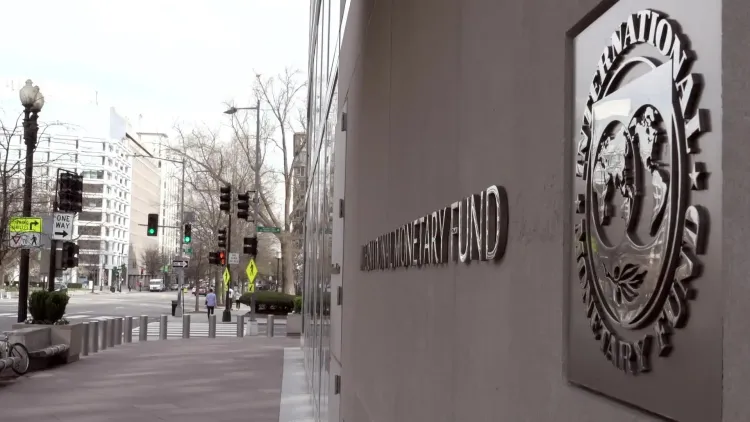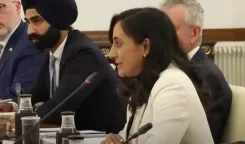Are IMF Loans Keeping Pakistan in a Cycle of Financial Distress?

Synopsis
Key Takeaways
- Pakistan's dependence on IMF loans highlights systemic vulnerabilities.
- Short-term financing fails to address long-term economic recovery.
- Trade data discrepancies complicate IMF negotiations.
- Structural reforms are essential for sustainable growth.
- The World Bank's support falls short of debt-servicing requirements.
New Delhi, Oct 11 (NationPress) Pakistan’s dependence on International Monetary Fund (IMF) assistance highlights both the extent of its challenges and the absence of meaningful reform, as noted in a recent report. It emphasizes that IMF loans are likely to continue providing temporary relief rather than facilitating long-term recovery, effectively trapping Pakistan in a cycle of financing without addressing underlying issues.
The report, published by Khaama Press, reveals that inconsistencies in achieving set objectives have raised doubts regarding the reliability of Pakistan’s external sector statistics. This has prompted the IMF to seek corrective actions and a transparent communication strategy to rebuild investor trust.
The IMF has initiated a formal evaluation of Pakistan’s $7 billion Extended Financing Facility (EFF) and $1.1 billion Resilience and Sustainability Facility (RSF), which assesses performance through June 2025.
Findings indicate that while Islamabad met power sector performance targets, it fell short in revenue collection by nearly 1.2 trillion Pakistani rupees, approximately 1% of the country’s GDP.
The global institution also expressed concern over an $11 billion discrepancy in Pakistan’s trade data over the last two fiscal years. Import figures from Pakistan Revenue Automation Limited (PRAL) were reported to be $5.1 billion less than those recorded by Pakistan Single Window (PSW) in FY2023-24, with the gap expanding to $5.7 billion in FY2024-25.
The Pakistan Bureau of Statistics has been reluctant to modify historical data due to fears regarding its impact on growth and export figures; however, the IMF insists that transparency is crucial.
Furthermore, successive administrations have consistently sidestepped necessary long-term reforms, instead opting for short-term external borrowing to alleviate immediate challenges. This has resulted in a persistent balance of payments crisis, transforming IMF bailouts into routine support rather than exceptional measures.
Current obligations linked to the IMF exceed $7 billion, with officially reported external debt constituting 35.1% of GDP. The accumulation of these debts presents serious threats to fiscal stability, as Pakistan's debt-servicing ratio is nearing 30% of export earnings—similar to the threshold that led to its default in 1999.
With exports stagnating at just 8% of GDP and imports surpassing 22%, the nation is grappling with a structural foreign exchange deficit that can only be addressed through more borrowing, entrenching it in a dependency cycle.
Notably, governance reforms have yielded limited success, while revenue targets remain unmet despite multiple IMF programs, and the application of structural reforms has been erratic.
The World Bank’s $20 billion ten-year initiative, announced in January 2025, aims to bolster energy, education, and infrastructure, yet its scale falls short compared to Pakistan's annual $30 billion debt-servicing demands.
The report concludes that for Pakistan to escape the relentless cycle of crisis and bailout, the arrangement between the IMF and Islamabad must undergo significant recalibration.








